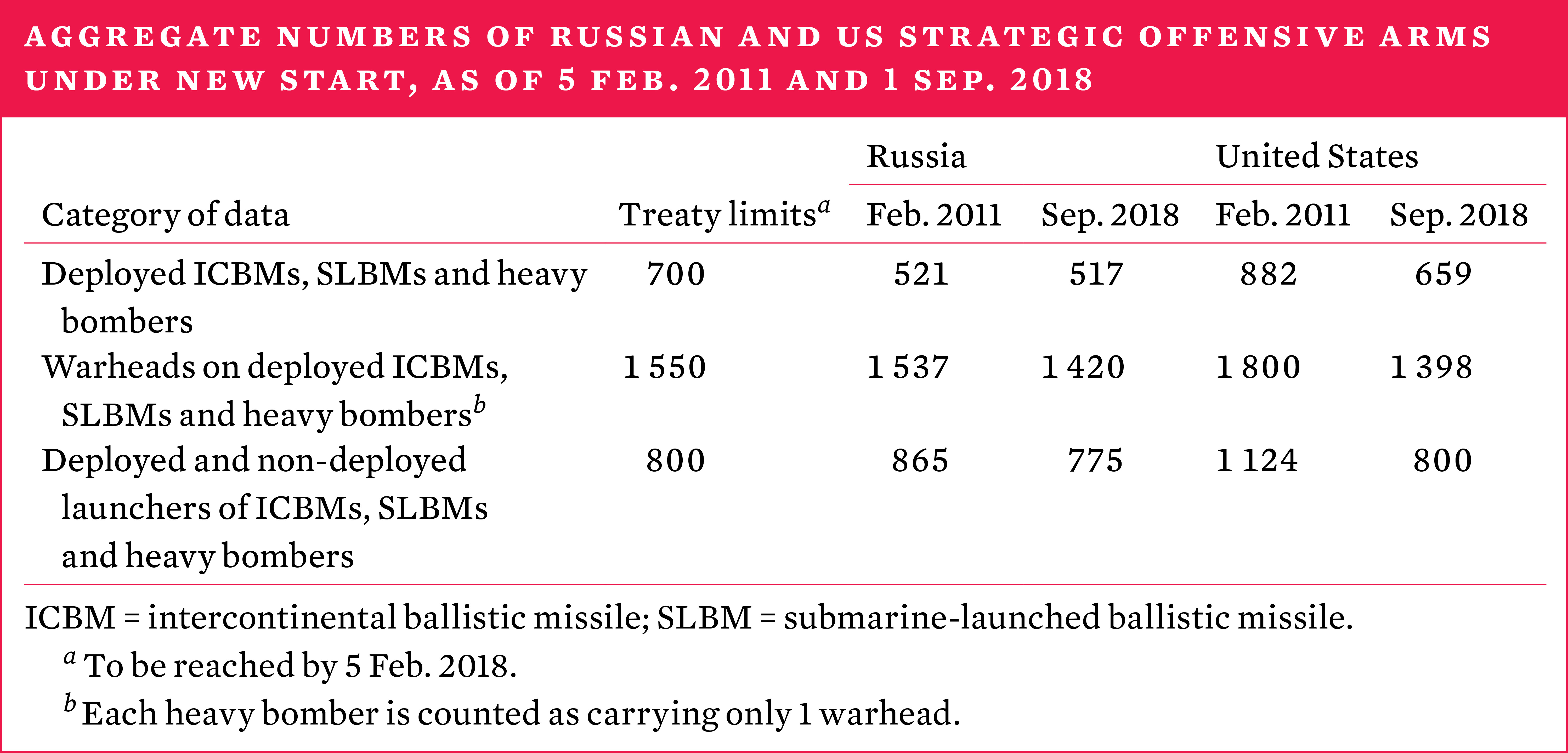7. Nuclear disarmament, arms control and non-proliferation
Overview, Tytti Erästö, Shannon N. Kile and Petr Topychkanov [PDF]
I. North Korean–US nuclear diplomacy, Shannon N. Kile [PDF]
II. US–Russian nuclear arms control and disarmament, Petr Topychkanov, Shannon N. Kile and Ian Davis [PDF]
III. Implementation of the Joint Comprehensive Plan of Action, Tytti Erästö [PDF]
IV. Treaty on the Prohibition of Nuclear Weapons, Tytti Erästö [PDF]
V. Other developments related to multilateral treaties and initiatives on nuclear arms control, disarmament and non-proliferation, Tytti Erästö, Shannon N. Kile, Petr Topychkanov and Ugnė Komžaitė [PDF]
North Korean–US nuclear dialogue
In 2018 there was renewed diplomatic engagement between the Democratic People’s Republic of Korea (DPRK, North Korea) and the United States over the latter’s long-standing demand—supported by multiple United Nations Security Council resolutions—that North Korea verifiably abandon its nuclear weapon and ballistic missile programmes. At the first-ever summit meeting between the North Korean and US leaders in Singapore in June, North Korea committed to work towards the ‘complete denuclearization’ of the Korean Peninsula. As part of the easing of political and military tensions during the year, North Korea announced that it had suspended the testing of nuclear weapons and ballistic missiles and had destroyed its nuclear weapon test site.
Russian–US nuclear arms control
In 2018 Russia and the United States completed the implementation of the 2010 Treaty on Measures for the Further Reduction and Limitation of Strategic Offensive Arms (New START). In February, the two countries announced that they had achieved the final New START force reduction limits by the specified deadline. However, the prospects for sustaining this progress appeared increasingly remote, given the political and military differences between the two countries. New START will expire in 2021 unless both parties agree to extend it, but there were no discussions in 2018 about doing so.
The INF Treaty
The future of nuclear arms control was also called into question in 2018 by the intensified dispute between the USA and Russia over a seminal cold war-era arms control treaty, the 1987 Soviet–US Treaty on the Elimination of Intermediate-Range and Shorter-Range Missiles (INF Treaty). The USA alleges that Russia has developed and deployed a mobile ground-launched cruise missile with a flight range prohibited under the treaty—an allegation that Russia has consistently dismissed as baseless. In October, US President Donald J. Trump announced that the USA would formally withdraw from the INF Treaty if Russia did not promptly address US compliance concerns. The year ended with growing pessimism that either party would take steps to preserve the treaty.
Iran and the Joint Comprehensive Plan of Action
In 2018 Iran continued to implement the 2015 Joint Comprehensive Plan of Action (JCPOA), an eight-party agreement designed to limit Iran’s proliferation-sensitive nuclear activities and to build inter-national confidence about the exclusively peaceful nature of its nuclear programme. Political tensions between Iran and the USA culminated in President Trump announcing in May that the USA would cease participation in the JCPOA and take steps to reimpose US sanctions against Iran that had been lifted or waived in connection with implementing the agreement. The Iranian Government appealed to the other signatories, especially the European Union, to provide guarantees that at least some degree of sanctions relief—one of Iran’s principal benefits under the JCPOA—could be provided despite the extra-territorial impact of the US sanctions in order for Iran to stay in the deal.

Treaty on the Prohibition of Nuclear Weapons
The Treaty on the Prohibition of Nuclear Weapons (TPNW), which was negotiated and opened for signature in 2017, remained a focus of international efforts to promote progress towards achieving the long-term goal of global nuclear disarmament. The TPNW is the first legally binding agreement to prohibit the development, deployment, possession, use and threat of use of nuclear weapons. During the year, there were debates in a number of states about whether to accede to the TPNW. The debates tended to focus on assessments of the normative impact of the proposed nuclear-weapon ban as well as its implications for nuclear deterrence-based security strategies and alliances. The treaty will enter into force once it has been signed and ratified by 50 states.
Multilateral arms control and disarmament
In other nuclear arms control-related developments during the year: the second session of the Preparatory Committee for the 2020 Non-Proliferation Treaty (NPT) Review Conference was held in April–May; and a new UN disarmament agenda, ‘Securing Our Common Future’, was launched by the UN Secretary-General, António Guterres, in May. In June, the high-level fissile material cut-off treaty (FMCT) expert preparatory group completed its work with the adoption of a final report that made recommendations on the scope and substantive elements for the future negotiation of an FMCT. In December, the UN General Assembly First Committee adopted a resolution calling for the UN Secretary-General to convene a conference in 2019 on creating a weapons of mass destruction-free zone in the Middle East.